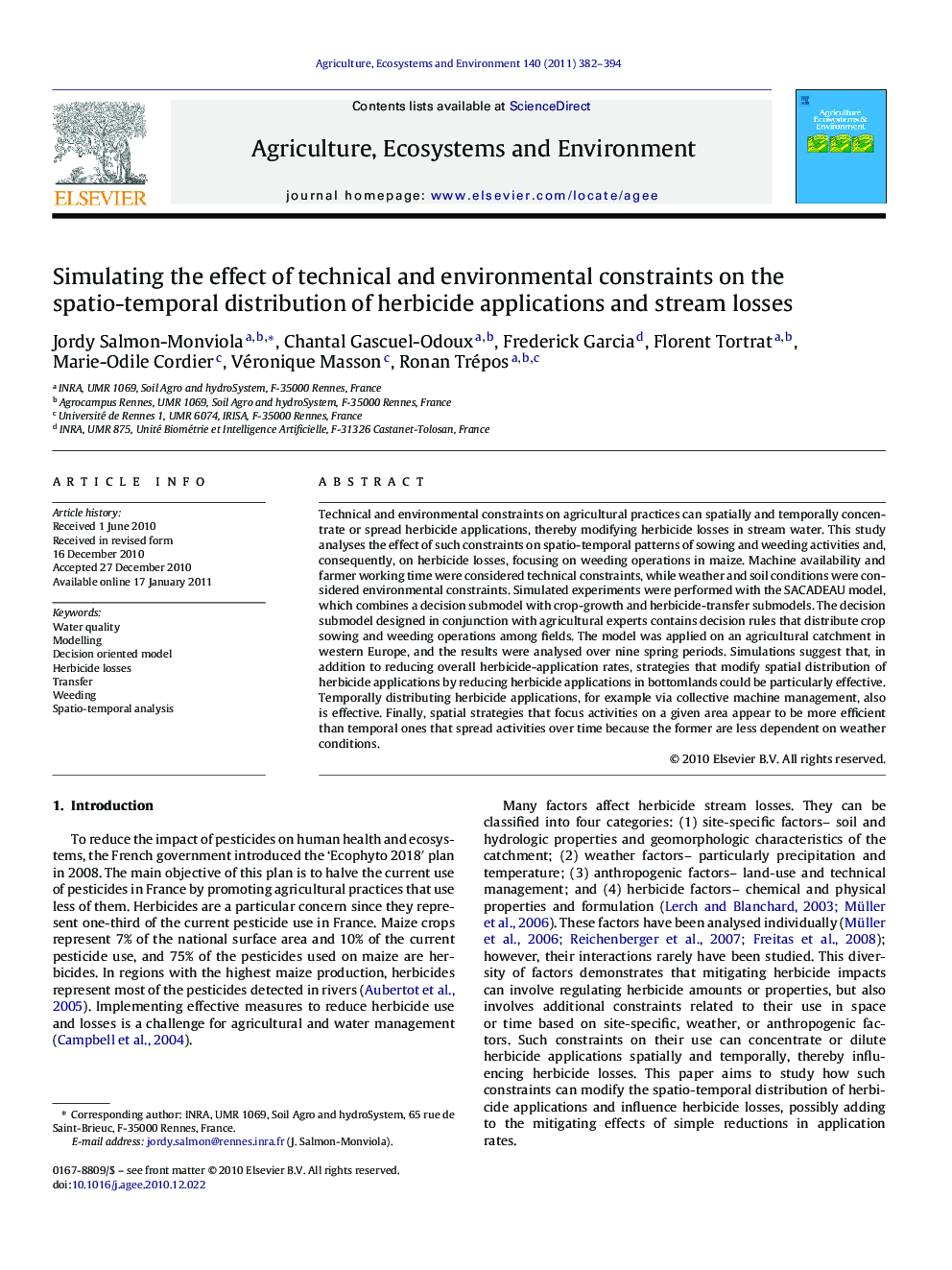| کد مقاله | کد نشریه | سال انتشار | مقاله انگلیسی | نسخه تمام متن |
|---|---|---|---|---|
| 2414727 | 1552110 | 2011 | 13 صفحه PDF | دانلود رایگان |

Technical and environmental constraints on agricultural practices can spatially and temporally concentrate or spread herbicide applications, thereby modifying herbicide losses in stream water. This study analyses the effect of such constraints on spatio-temporal patterns of sowing and weeding activities and, consequently, on herbicide losses, focusing on weeding operations in maize. Machine availability and farmer working time were considered technical constraints, while weather and soil conditions were considered environmental constraints. Simulated experiments were performed with the SACADEAU model, which combines a decision submodel with crop-growth and herbicide-transfer submodels. The decision submodel designed in conjunction with agricultural experts contains decision rules that distribute crop sowing and weeding operations among fields. The model was applied on an agricultural catchment in western Europe, and the results were analysed over nine spring periods. Simulations suggest that, in addition to reducing overall herbicide-application rates, strategies that modify spatial distribution of herbicide applications by reducing herbicide applications in bottomlands could be particularly effective. Temporally distributing herbicide applications, for example via collective machine management, also is effective. Finally, spatial strategies that focus activities on a given area appear to be more efficient than temporal ones that spread activities over time because the former are less dependent on weather conditions.
Research highlights▶ The effect of a higher flexibility in time and space in herbicide applications appears to depend strongly on weather conditions, generally becoming more effective during rainy years. ▶ Spatial strategies that focus activities on a given area appear to be more efficient than temporal ones that spread activities over time because the former are less dependent on weather conditions. ▶ Strategies that modify spatial distribution of herbicide applications by reducing herbicide applications in bottomlands could be particularly effective.
Journal: Agriculture, Ecosystems & Environment - Volume 140, Issues 3–4, March 2011, Pages 382–394